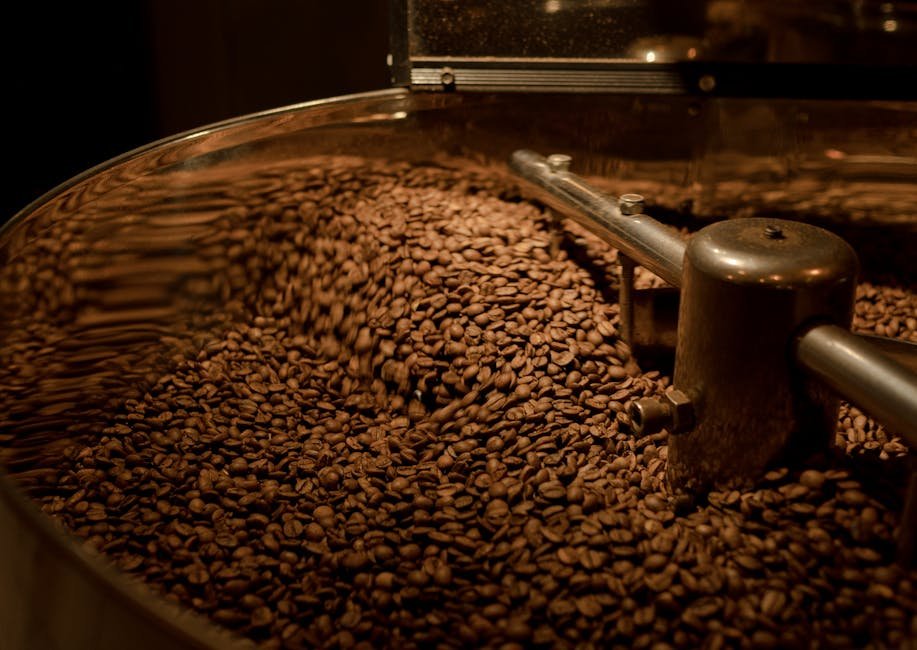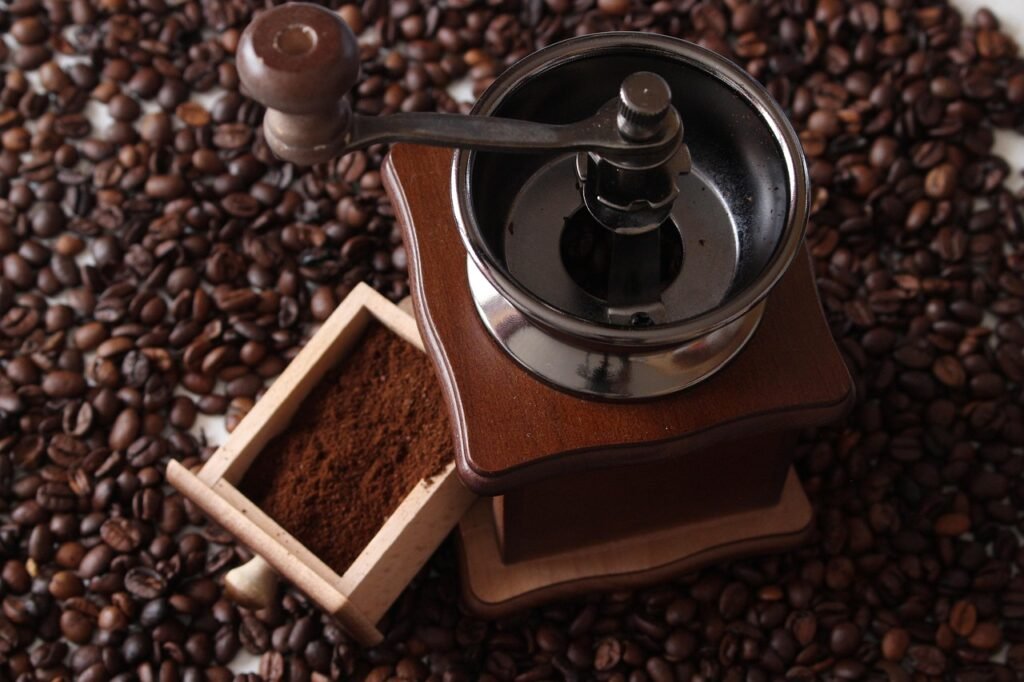Master the Art of Coffee Roasting
Coffee roasting tips are all about changing green coffee beans into aromatic and flavorful masterpieces. For coffee enthusiasts who crave consistent flavors and ethical sourcing, mastering roasting is essential. Here are some quick coffee roasting tips to get you started:
- Start with quality green beans: Choose beans that suit your flavor preferences. Consider Equipoise Coffee’s selections, like Ethiopian Yirgacheffe or Colombian Supremo.
- Understand the stages: Begin with the drying stage, where moisture is removed. Then move to the browning stage with the Maillard reaction, and finally the development stage for your desired roast level.
- Control heat carefully: Balance heat application throughout the process to achieve consistent roasts and bring out specific flavors.
- Know your roast levels: Decide between light, medium, or dark roasts based on acidity and flavor profiles. Light roasts bring out fruity notes, while dark roasts offer a bold, earthy taste.
Roasting coffee at home isn’t just about technique—it’s a way to explore and enjoy different aromas and flavors. By experimenting and honing your skills, you’ll open up the unique potential of each cup, just like a true roast master.

Must-know coffee roasting tips terms:
Understanding Coffee Roasting
Coffee roasting is the magical process that transforms green coffee beans into the delicious, aromatic beans we love. It involves applying heat to bring about chemical changes in the beans, creating complex flavors and aromas.
Heat Process
Roasting coffee is all about heat. It involves three types of heat transfer: conduction, convection, and radiation. Each type plays a role in how the beans roast. For example, conduction is like cooking on a frying pan, while convection is similar to using a blow dryer.
Roasters like Equipoise Coffee use a combination of these methods to achieve the desired roast. The key is to control the heat carefully to ensure even roasting and prevent burning.
Chemical Changes
When coffee is roasted, it undergoes several chemical changes. One crucial reaction is the Maillard reaction. This is the same reaction that gives browned foods like toast and cookies their distinctive flavors.
In coffee, the Maillard reaction occurs during the browning stage. Amino acids and sugars react, creating a wide range of flavors and aromas. It’s this reaction that helps turn a tasteless green bean into a flavorful coffee bean.
Green Beans
Green coffee beans are the raw seeds of the coffee fruit. They are dense and contain about 10-12% water. Before roasting, remove this moisture in the drying stage.
Choosing high-quality green beans is the first step to a great roast. Consider options from Equipoise Coffee, like the Ethiopian Yirgacheffe or Colombian Supremo. Each bean type offers unique flavors, so experimenting with different beans can be a fun way to find new tastes.

Understanding these fundamentals of coffee roasting helps in creating a flavorful brew. By mastering the heat process and recognizing the chemical changes, you can open up the potential of each bean. Next, we’ll explore how to use this knowledge to perfect your roasting technique.
Coffee Roasting Tips for Beginners
Starting your journey into coffee roasting can be both exciting and a bit daunting. But don’t worry, we’ve got some coffee roasting tips to help you get started on the right foot.
Roast Time
Roast time is crucial in determining the flavor of your coffee. It refers to how long the beans are exposed to heat. Generally, shorter roast times result in lighter roasts, while longer times lead to darker roasts.
- Light Roast: Typically takes about 7-9 minutes. Beans appear light brown and have no oil on the surface.
- Medium Roast: Takes around 9-11 minutes. Beans are medium brown, still oil-free.
- Dark Roast: Beyond 11 minutes, beans become dark brown and oily.
Keeping a timer handy can help you control the roast time effectively.
Roast Color
The color of the roasted beans is a great visual cue for determining the roast level. As beans roast, they move from green to yellow, then to different shades of brown.
- Light Roast: Pale brown with no oil.
- Medium Roast: Rich brown, still dry.
- Dark Roast: Dark brown with visible oil.
Using a consistent light source to check the color can help you achieve your desired roast level.
Smooth RORs (Rate of Rise)
One of the most important aspects of roasting is maintaining a smooth Rate of Rise (ROR). This refers to how quickly the temperature of the beans is increasing.
A smooth ROR ensures even roasting and prevents defects. Here are some tips to achieve it:
- Monitor Temperature: Use a reliable thermometer to track the heat levels.
- Adjust Heat Gradually: Avoid sudden changes in temperature to prevent ROR crashes.
- Practice: Mastery comes with practice. The more you roast, the better you’ll understand how to maintain a smooth ROR.

By focusing on these key areas—roast time, roast color, and smooth RORs—you can start roasting like a pro. The journey to perfect coffee is all about experimenting and learning. Next, we’ll dive deeper into mastering roast levels to refine your skills further.
Mastering Roast Levels
Achieving the perfect roast level is essential for unlocking a diverse range of coffee flavors. Each roast level—light, medium, and dark—provides a distinct taste experience. Let’s delve into how to achieve each one and what makes them unique.
Light Roasts
Light roasts focus on preserving the bean’s original flavors. They are heated just until the “first crack,” a point where the beans pop and expand.
- Color: Pale brown, no oil on the surface
- Flavor Profile: High acidity with fruity and floral notes
- Body: Light and crisp
Light roasts are ideal for those who enjoy a bright and tangy cup. They highlight the unique characteristics of the coffee’s origin, making them perfect for Ethiopian Yirgacheffe beans, known for their citrus and floral notes.
Medium Roasts
Medium roasts offer a balance between the bean’s natural flavors and the roasting process. They are roasted beyond the first crack but stopped before the second crack.
- Color: Medium brown, still dry
- Flavor Profile: Balanced acidity and sweetness with hints of chocolate and nuts
- Body: Smooth and rounded
This roast level is favored for its versatility and is often used in espresso blends like the Cavaliers Blend. It provides a harmonious mix of flavors, making it a popular choice.
Dark Roasts
Dark roasts are bold and intense. They are roasted until the second crack, where the beans release their oils and develop a glossy surface.
- Color: Dark brown with an oily sheen
- Flavor Profile: Low acidity, with smoky, chocolatey, and earthy notes
- Body: Heavy and full-bodied
Dark roasts cater to those who love a robust and rich cup of coffee. The longer roasting time reduces acidity, resulting in a smoother taste. This makes them ideal for creating a strong espresso or a rich French press brew.
Understanding the characteristics of each roast level allows you to tailor your roasting process to match your taste preferences. Whether you enjoy the lively notes of a light roast or the deep, smoky flavors of a dark roast, mastering these levels will enhance your coffee experience.
Next, explore coffee roasting tips for optimal flavor, focusing on data collection and avoiding common pitfalls like baked roasts.
Coffee Roasting Tips for Optimal Flavor
Achieving the perfect coffee flavor involves more than just choosing the right beans. It requires a keen understanding of coffee roasting tips like data collection, avoiding baked roasts, and mastering the Development Time Ratio (DTR).
Data Collection
Collecting data during the roasting process is crucial. It helps you understand how variables like temperature and time affect the flavor. Use a roast log to record:
- Bean Temperature: Track the bean temperature throughout the roast.
- Rate of Rise (ROR): Monitor how quickly the temperature increases. Smooth RORs are key to avoiding roast defects.
- Time Marks: Note the time at which key events like the first crack occur.
This data allows you to replicate successful roasts and make informed adjustments. Consistency is key to producing a balanced and flavorful coffee.
Avoiding Baked Roasts
Baked roasts are a common pitfall. They result from hard ROR crashes, not slow roasting. Baked coffee often tastes flat, with hints of straw and diminished sweetness. To prevent this:
- Smooth RORs: Aim for a steady rise in temperature without sudden drops.
- Monitor Development: Pay close attention to the development stage, adjusting heat as needed to ensure even roasting.

Understanding Development Time Ratio (DTR)
DTR is a useful tool for quality control and achieving a balanced roast curve. It represents the percentage of total roast time spent in the development phase. While some advocate for a 15% DTR for light roasts, this isn’t a one-size-fits-all solution.
- Tailor to Taste: Find a DTR that suits your desired flavor profile.
- Focus on Bean Color and Temperature: Use these as primary indicators for when to drop a batch, rather than rigidly sticking to a specific DTR.
By focusing on these coffee roasting tips, you can improve the flavor of your beans and create a more satisfying cup. Whether you’re roasting Ethiopian Yirgacheffe for its citrus notes or a Colombian Supremo for its rich body, understanding these principles will help you achieve the perfect roast.
Next, we’ll answer some frequently asked questions about coffee roasting to further improve your knowledge and skills.
Frequently Asked Questions about Coffee Roasting Tips
How to roast coffee perfectly?
Roasting coffee perfectly starts with green beans. These are raw and need to be roasted to open up their flavor. You can roast them in an oven or a dedicated coffee roaster.
- Oven Roasting: Place beans on a baking tray and roast at 450°F. Stir every few minutes to ensure even roasting. Listen for the first crack to determine roast level.
- Coffee Roaster: Offers more control and consistency. Set the temperature and monitor the roast closely.
How can I improve my coffee roasting?
Improving your coffee roasting involves refining your technique and understanding the impact of variables like brewing methods, roast levels, and water temperature.
- Experiment with Roast Levels: Try light, medium, and dark roasts. Each has unique flavors.
- Adjust Water Temperature: Use water around 200°F for brewing. Too hot or too cold can affect taste.
- Explore Different Brewing Methods: Each method, like French press or espresso, highlights different roast characteristics.
What to consider when roasting coffee?
When roasting coffee, consider the interplay of chemical compounds, roast degree, and taste.
- Chemical Compounds: Roasting alters these compounds, affecting flavor and aroma. The Maillard reaction is crucial here.
- Roast Degree: This determines the final flavor. Light roasts are fruity, while dark roasts are bold.
- Taste: Always taste your coffee to assess the roast. Look for balance in acidity, sweetness, and body.
By understanding these factors, you can refine your technique and enjoy better coffee at home.
Next, we’ll dig into the conclusion, discussing Equipoise Coffee’s commitment to ethical sourcing and balanced flavors.
Conclusion
At Equipoise Coffee, crafting the perfect cup is a harmonious blend of art and science. Our dedication to ethical sourcing means each cup you savor not only tastes amazing but also supports sustainable practices. We work closely with passionate growers committed to quality and environmental stewardship, ensuring every sip you take is both flavorful and responsible.

Their focus on balanced flavors is evident in every roast. Whether it’s the fruity notes of their Ethiopian Yirgacheffe or the rich depth of the Colombian Supremo, Equipoise Coffee showcases the unique character of each origin. This balance is achieved through a precise roasting process that brings out the natural sweetness and complexity in every bean.
For those eager to explore coffee roasting, Equipoise Coffee offers a range of options that highlight their dedication to quality. By choosing their products, you’re not only getting a great cup of coffee but also supporting a company that values ethical practices and exceptional flavor. Experience the Equipoise difference by trying their carefully crafted blends and single-origin offerings today.
















